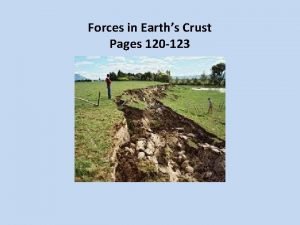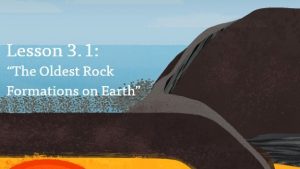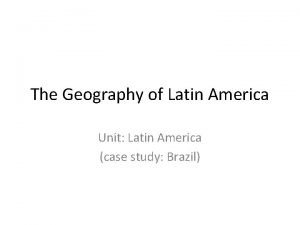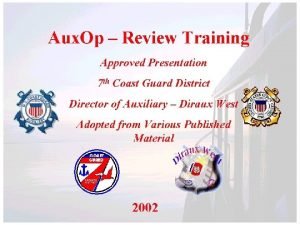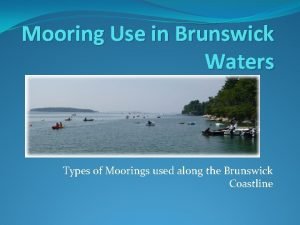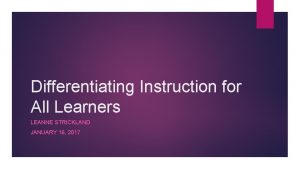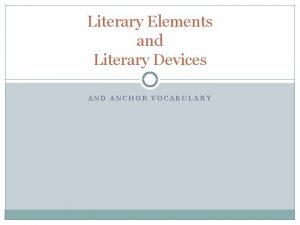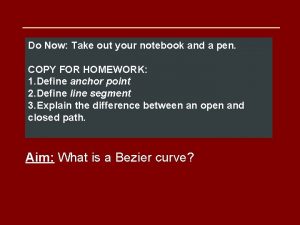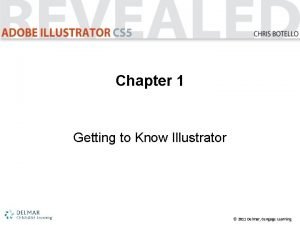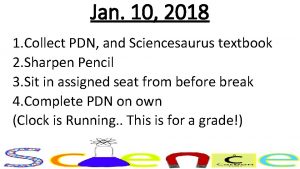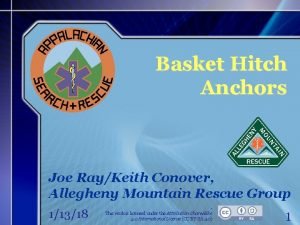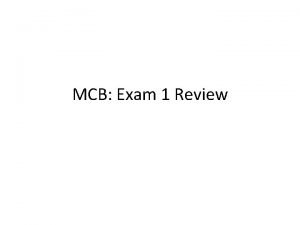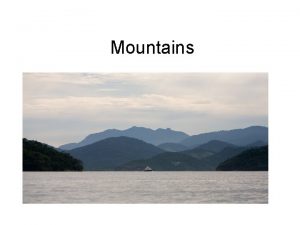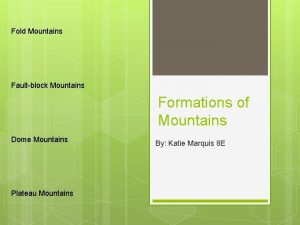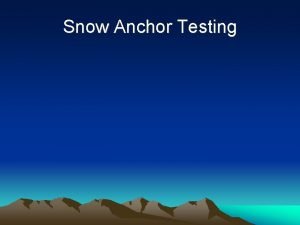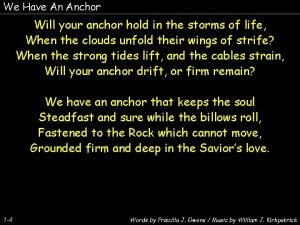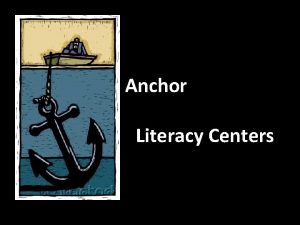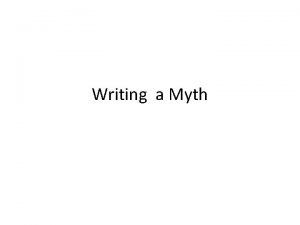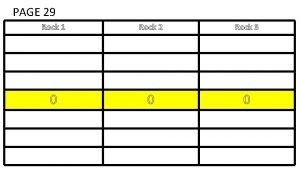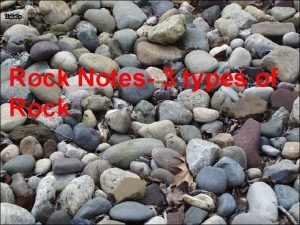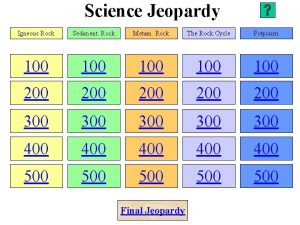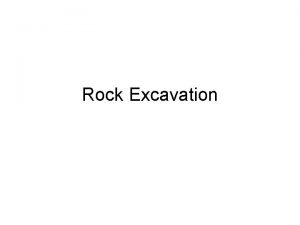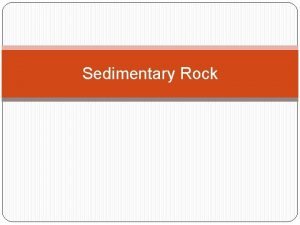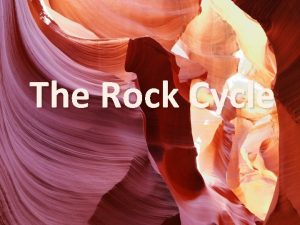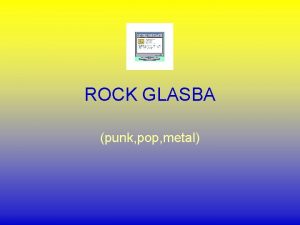Anchor Phenomenon The rock of the Rocky Mountains
























- Slides: 24


Anchor Phenomenon: The rock of the Rocky Mountains and the rock of the Great Plains have similar mineral composition. Investigative Phenomenon: Rock formations can move. Students learn: • Asking deeper questions helps readers check their understanding as they read. • Metamorphic rock is another rock type that is formed when heat or pressure deep underground changes existing rock.

Lesson at a Glance 1: Warm-Up (10 min. ) Students learn new information about the Rocky Mountains and consider what this means. This information provides motivation to learn how rock formations can move from underground to the surface. 2: “The Oldest Rock Formations on Earth” (25 min. ) Students read to learn about how uplift affects rock formations using the example of one of the oldest rock formations on Earth. The teacher uses this opportunity as an On-the-Fly Assessment of students’ progress in engaging with scientific texts and asking deeper questions. 3: Discussing Annotations (10 min. ) Students discuss their thinking about the reading in order to share important insights and surface alternate conceptions. Students’ annotations provide an opportunity for an On-the-Fly Assessment of annotation skills, reading comprehension, and content understanding. 4: Homework Students use the Plate Motion Simulation to explore plate motion and generate ideas about how plate motion cause rock formations to move.

For the Classroom Wall • Chapter 3 Question: How could rock from one of the regions have transformed into a different type of rock in the other region? • vocabulary card: metamorphic rock For the Class • masking tape* • Annotation tracker For Each Student • optional: printed copy of “The Oldest Rock Formations On Earth” article* • optional: Rock Transformations Investigation Notebook, pages 69– 72* Digital Tools • Plate Motion Simulation • “The Oldest Rock Formations on Earth” article in the Amplify Library

Before the Day of the Lesson • Preview “The Oldest Rock Formations on Earth” in the Amplify Library. • Prepare to model Active Reading. You can use think-aloud script that is provided in Activity 2, or you can modify the script, modeling in a way that makes the most sense for your students. • Familiarize yourself with the Plate Motion Simulation activity in this lesson. Students will complete this Sim activity for homework. Practice the activity and refer to the Possible Responses tab for information on how students should engage with the Sim. • Note: For this lesson only, students will be using the Sim from the Plate Motion unit. If you have taught the Plate Motion unit, students should already be familiar with this Simulation. If not, you may want to reserve a few extra minutes to review how to use the Plate Motion Sim. • Prepare for On-the-Fly Assessments. There are two On-the-Fly Assessments included in this lesson. Activity 2 provides an opportunity to informally assess students’ ability to engage with scientific texts and ask deeper questions while reading. In Activity 3, students’ annotations provide an additional opportunity for informal assessment.

Immediately Before the Lesson • Post the following items on the wall: • Chapter 3 Question: How could rock from one of the regions have transformed into a different type of rock in the other region? • vocabulary card: metamorphic rock • Write the Investigation Question on the board: “How do rock formations move between the surface and Earth’s interior? ” Between-Class Prep • Locate a new Annotation Tracker for your next class. • Erase digital annotations. Erase the digital annotations you made in the article in the Amplify Library before modeling for the next class. At the End of the Day • Use the Annotation Trackers to review students’ submitted articles. If you have time to review students’ submitted articles and annotations, continue to fill out each Annotation Tracker to identify questions, alternate conceptions, and exemplary annotations. • Use the Annotation Summary Sheets to analyze students’ annotations. The Annotation Summary Sheet is intended to help you identify trends in student thinking, recurring questions students have about the text, and other issues that you might want to address. Use your Annotation Trackers to fill out the Annotation Summary Sheets. • Collect exemplary annotations and recurring alternate conceptions to share with the class. Exemplary annotations and recurring alternate conceptions can be shared in the subsequent lesson. Identify examples of student annotations that are thought provoking, exemplify the Active Reading approach, and/or target key science ideas.

WARM UP: Complete on a blank sheet of paper 1. What are your initial thoughts about this new information? 2. What additional information do you think you would need in order to evaluate the claims?

Chapter 3 Question How could rock from one of the regions have transformed into a different type of rock in the other region? Investigation Question How do rock formations move between the surface and Earth’s interior?

Investigation Question How do rock formations move between the surface and Earth’s interior? When are rock formations stable? When do rock formations change?

Today, we’ll read about how a rock formation changed over a very, very long time Active Reading Strategies • Pay attention to your thoughts while you read • Slow down for unfamiliar words • Connect new ideas to what you already know • Ask deeper questions

As I read, I’m going to think about what we have been studying and try to use what I already know to ask a deeper question. If these rocks are old, maybe that means they formed a long time ago and then did not change. I wonder why that might happen.

As I read, I’m going to think about what we have been studying and try to use what I already know to ask a deeper question.

As I read, I’m going to think about what we have been studying and try to use what I already know to ask a deeper question. I remember reading that the Devils Tower was only formed about 50 million years ago!

As I read, I’m going to think about what we have been studying and try to use what I already know to ask a deeper question.

You don’t need to annotate or ask a question for every paragraph, but try to include at least 2 deeper questions or annotations. Independently • Go to Amplify • Chapter 3 • Lesson 3 -1 • Activity 2

Review your annotations and choose a question, connection, or challenging word to share with a partner. In the annotation box, type “#share. ” Using hashtags makes your annotations searchable later

Discuss your annotations with your partners. In the annotation box, type “#discussed. ”

You can present something you discussed from the article with your partner or an unanswered question you still have. In the annotation box, type “present. ”

Active Reading Strategy: Asking Deeper Questions Asking deeper questions can slow one down and interfere with a flow of reading in some cases, but, when reading difficult texts, it is often very helpful to employ this strategy.

Annotations to Share?

What did you learn about metamorphic rock from the article? How is metamorphic rock different from the other types of rock we have been studying?

metamorphic rock the rock type formed when heat or pressure deep underground changes existing rock


Observe how the plates move in the Sim below How can this result in the movement of rock formations?
 Strike slip fault
Strike slip fault Anchor phenomenon
Anchor phenomenon Igneous vs metamorphic
Igneous vs metamorphic Pampas definition ap human geography
Pampas definition ap human geography Rocky mountains geography map
Rocky mountains geography map Rock cycle
Rock cycle Chapter 3 standardized test practice answers
Chapter 3 standardized test practice answers Igneous rock to metamorphic rock
Igneous rock to metamorphic rock Types of rocks
Types of rocks Climbing rock climbing
Climbing rock climbing A rock climber's shoe loosens a rock and her climbing buddy
A rock climber's shoe loosens a rock and her climbing buddy A grapnel is a(n) ______.
A grapnel is a(n) ______. Dor-mor pyramid mooring anchor
Dor-mor pyramid mooring anchor Thick and thin questions examples
Thick and thin questions examples Anchored to its literary approach
Anchored to its literary approach Please use the add anchor point tool on a segment of a path
Please use the add anchor point tool on a segment of a path Illustrator add anchor point
Illustrator add anchor point Anchor institutions task force
Anchor institutions task force Sciencesaurus textbook
Sciencesaurus textbook Anchor statement example
Anchor statement example Allegheny mountain rescue group
Allegheny mountain rescue group Fsa writing examples
Fsa writing examples Largest boat anchor
Largest boat anchor Anchor primer
Anchor primer Gpi anchor
Gpi anchor
